A common plant in backyard gardens, tomatoes have their share of problems, such as a number of diseases that appear as black spots.
Understanding these conditions is essential for any enthusiastic home gardener or aspiring horticulturist who wants to safeguard the health and productivity of their tomato plants.
This in-depth investigation will offer you a firm foundation in the fundamentals of plant diseases, with a special emphasis on those that impact tomato plants.
After that, we’ll go into the details of tomato plant black spots and determine what diseases or other variables are responsible for them.
After that, we will look at ways to prevent problems and treat them, giving you access to both organic and chemical remedies in your toolbox.
The Basics of Plant Diseases
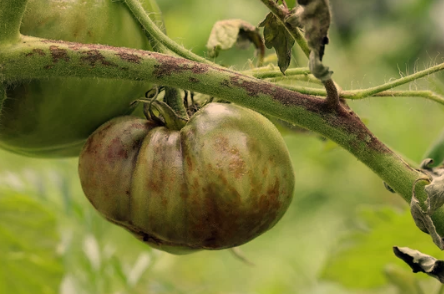
Black Spots on Tomato Plants
Basics of Plant Diseases: Understanding the Underlying Causes and Symptoms
When it comes to maintaining a healthy garden, understanding the basics of plant diseases is fundamental. Each plant species, including tomato plants, are susceptible to a range of diseases that exhibit unique sets of symptoms and causes.
Plant diseases are predominantly caused by pathogenic microorganisms such as fungi, bacteria, and viruses. Sometimes, however, nutritional imbalances, environmental factors, or pests can also lead to diseased plants.
Common symptoms of plant diseases include discoloration, distorted growth patterns, wilting, rot, and spots on the leaves or fruit. The emergence of these symptoms often depends on the type of disease that has infected the plant.
Understanding Tomato Plant Diseases: Causes, Symptoms and Treatment
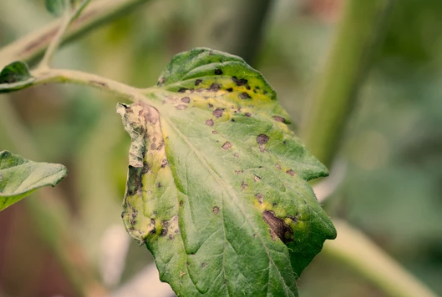
Tomato plants are popular in home gardens but they can be vulnerable to a host of diseases. One of the most common symptoms that indicate a tomato plant disease is the appearance of black spots on the leaves or on the fruit itself.
Understanding the causes of these signs is important for diagnosis and treatment. Some common diseases that afflict tomato plants include Septoria Leaf Spot, Early Blight, and Late Blight.
Septoria Leaf Spot is a fungus disease characterized by circular black or brown spots on the lower leaves of the tomato plant. Early Blight, caused by the fungus Alternaria solani, creates dark black spots on leaves, often surrounded by concentric yellow rings. Late Blight, caused by the pathogen Phytophthora infestans, can result in blackish lesions on leaves and fruit.
Studying these diseases can help you identify the root cause of black spots appearing on your tomato plants. If diagnosed early, many of such diseases can be controlled with the right practices and treatments. This can include fungicide application, adequate plant watering, ensuring good air circulation, and regularly sanitizing garden tools.
Wrapping Up: Early Detection is Key
Although tomato plant diseases and their complications can be intimidating to a beginner gardener, remember that early detection is often key to saving a plant.
Regularly checking your plants for symptoms like black spots can facilitate early diagnosis, thereby enabling a swift and effective treatment regime.
Remember, gardening is a skill that often requires practice and patience.
But with perseverance and the right knowledge, you’re well on your way to keeping a healthy disorder-free garden.
Whether you’re growing tomatoes or any other vegetable, understanding the basics of plant diseases will help support your horticultural success.
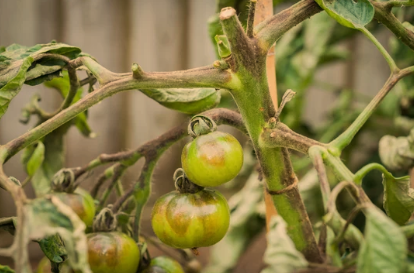
Detailed Study on Black Spots
Introduction: Unraveling the Mystery of Black Spots on Tomato Plants
Tomato plants are a staple of many home gardens.
However, their cultivation is occasionally marred by the appearance of black spots on their leaves, stems, or fruits. These ominous signs can indicate a lot about the health of the plants.
Depending upon their type, black spots can signify several different kinds of fungal and bacterial diseases.
This detailed study is intended to help you understand the differing types of black spots, what each type represents, and what causes them.
The primary focus here will be on fungal diseases like early blight, late blight, and septoria leaf spot, bacterial diseases like bacterial spot and speck, and other factors that might lead to black spots.
Section One: Fungal Diseases Resulting in Black Spots on Tomato Plants
Three common fungal diseases often manifest as black spots on tomato plants: early blight (Alternaria solani), late blight (Phytophthora infestans), and Septoria leaf spot (Septoria lycopersici).
- Early Blight: This disease leads to small, bull’s-eye like black spots on older leaves; these spots later enlarge, leading to yellowing and shriveling of leaves from the bottom up. It is mainly caused by the Alternaria solani fungus and is promoted by warm, humid weather, and poor leaf circulation.
- Late Blight: This disease features large, dark, and greasy-looking spots on leaves, stems, and tomato fruits. The spots may be surrounded by pale green areas. Late blight is caused by the Phytophthora infestans fungus, which thrives in cool, wet weather conditions.
- Septoria Leaf Spot: Septoria leaf spot presents as small black dots surrounded by yellow haloes, usually on the underside of lower leaves. The disease is caused by the Septoria lycopersici fungus, which prefers warm, wet conditions.
Section Two: Bacterial Diseases Resulting in Black Spots on Tomato Plants
Two bacterial diseases that result in black spots on tomato plants are bacterial spot (Xanthomonas vesicatoria) and bacterial speck (Pseudomonas syringae pv. tomato).
- Bacterial Spot: Bacterial spot causes small, raised black spots on leaves, stems, and fruits. These spots may become scaly or cracked over time. The Xanthomonas vesicatoria bacterium is the culprit behind this disease, thriving in hot and humid weather.
- Bacterial Speck: Bacterial speck can be identified by tiny, dark black spots on leaves, stems, or fruits. The disease, caused by the Pseudomonas syringae pv. tomato bacterium, prospers in cool, wet weather.
Section Three: Other Factors That Can Cause Black Spots on Tomato Plants
In addition to the prominent fungal and bacterial diseases detailed above, other factors can also lead to black spots on tomato plants.
One such condition is the Blossom End Rot, which occurs due to calcium deficiency and manifests as dark, sunken spots on the fruit’s bottom. Another condition is tomato pith necrosis, which results in black spots on the stems.
To correctly identify and address the cause of black spots on your tomato plants, consider the characteristics of the spots, your local weather conditions, and the overall health of your plant.
Prevention, in most cases, lies in good garden sanitation, appropriate watering practices, and adequate spacing between plants to ensure good air circulation.
For fungal and bacterial diseases, consider using disease-resistant varieties of tomato plants. In all situations, if the problem persists, seek the advice of a local extension service or a plant disease diagnostic lab.
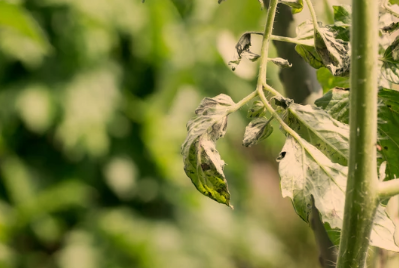
Effective Prevention and Treatment
Identifying Black Spots on Tomato Plants: An Overview
The tomato plant can be susceptible to various diseases and pests, characterized by different symptoms like yellowing leaves, wilting, and black spots.
One such disease marked by black spots is Septoria leaf spot. The spots appear on the leaves, stems, and sometimes on the tomato fruit.
Other diseases causing black spots on tomatoes include early blight, bacterial speck, and bacterial spot. Properly identifying which disease your plant has is crucial in treating it and in preventing an outbreak in the future.
Prevention: Maintaining Tomato Plant Health
To prevent these diseases from affecting your tomato plants, consider these following practices:
- Regular Watering: Tomato plants prefer deep and regular watering as irregularities can increase their vulnerability to diseases.
- Crop Rotation: Avoid planting the same species in the same soil continuously as pathogens can easily build up.
- Clean Gardening Tools: Ensure your gardening tools are clean before and after use to prevent the spread of diseases.
- Adequate Plant Spacing: Plant your tomatoes with enough room for air circulation, which can prevent the spread of diseases.
- Soil Health: It’s also crucial to have healthy soil, consider adding compost or organic matter to enrich it.
Organic and Chemical Controls
Should prevention fail, one can treat the diseases causing black spots with organic or chemical controls:
- Organic Controls: These include options like copper or sulfur sprays, neem oil, or a baking soda and water mixture. These methods can be effective but frequently need reapplication.
- Chemical Controls: These solutions usually contain active ingredients like chlorothalonil or mancozeb. However, remember to follow the instructions on the package, as misuse can be harmful to the environment and your health.
Cultural Practices for Disease Management
Cultural practices that can help manage and prevent diseases causing black spots include:
- Pruning: Regularly prune your tomato plants to increase ventilation and to remove any diseased foliage.
- Fertilizing: Providing your tomato plants with a balanced fertilizer can help them resist diseases.
- Mulching: Mulching the base of your plants can help prevent the spore spread of some diseases.
A Well-Informed Approach
By educating yourself on the various diseases, their causes, prevention methods, and treatments, you can ensure your tomato plants remain healthy and prosperous.
As with most plants, good cultural practices paired with diligent surveillance can be the most potent way to battle diseases.
Prevention is always better than a cure, but should your plants become infected, promptly employing organic or chemical treatments can effectively limit the damage.
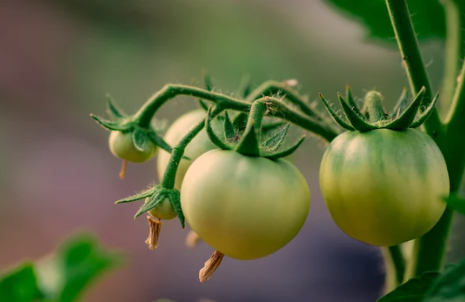
Hands-On Identification Exercise
Introduction: Spotting Black Spots on Tomato Plants
Tomato plants can be sensitive and prone to certain diseases. One such disease results in black spots appearing on the plant’s foliage and fruit. Accurately identifying these black spots can be key to applying the correct treatment and saving your plants. This exercise aims to guide you through the process of hands-on identification of black spots on real tomato plants.
Step 1: Intimate Observation
Start by checking on your tomato plants daily. This allows you to carry out an intimate observation of the growth and overall health of your plants. Look for changes in the foliage color and texture, as this can be an initial signal of a problem.
Step 2: Identification of Black Spots
Examine the foliage and the fruits. In some cases, black spots can be so tiny that they are easy to miss. In other cases, they may spread and merge with each other, causing larger blackened areas. These black spots are most typically caused by fungal infections such as Septoria leaf spot or early blight.
Step 3: Characteristics of Black Spots
Check the characteristics of the black spots. Septoria leaf spots are small and dark and often have a grey or white center. Early blight spots, on the other hand, are larger and often have concentric, bull’s-eye-like rings.
Step 4: Presence of Yellowing
Inspect the region around the black spots. If there is a distinct yellow halo around the black spot, it may be suggestive of Septoria leaf spot. Early blight, on the other hand, causes “bullseye” or target-like rings in shades of dark brown to black with no notable yellowing.
Step 5: Inspect the Backside of Leaves
Don’t just limit your examination to the top of the leaves. Flip them over and examine the backside closely.
Step 6: Look for Spread Patterns
Watch for spreading patterns. If black spots first emerge on the lower, older foliage before progressing upwards, this could be another sign of early blight or Septoria leaf spot.
Conclusion: Confirming Your Findings
By paying attention to the signs and symptoms your tomato plants are displaying, you’ll be able to identify the presence of black spots confidently.
This critical skill will allow you to take action at the onset of disease to help mitigate damage or loss of your tomato plants. Always remember that promptly tackling diseases will favor your tomato growth yielding a hearty crop.
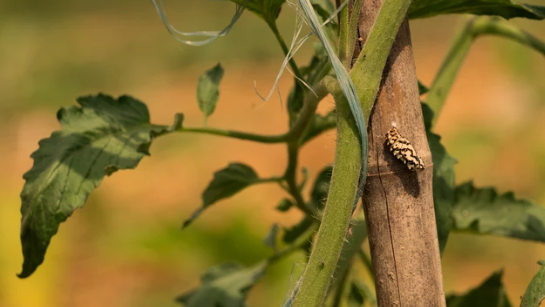
Now that you have a thorough grasp of tomato plant black spots, you are prepared to notice and address these problems in your farm or garden.
A thorough investigation of the many conditions and contributing variables for these spots not only increases awareness but also equips you with knowledge.
The suggested prevention measures and therapies also act as a manual that is easily adaptable to the real world.
Last but not least, the practical identification exercise equips you to accurately and confidently identify black spot disorders.
Remember that your diligence will directly affect the health of your tomato plants, and these acquired abilities will go a long way toward ensuring a productive and abundant harvest.



